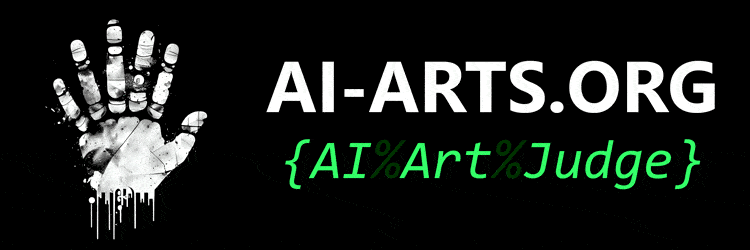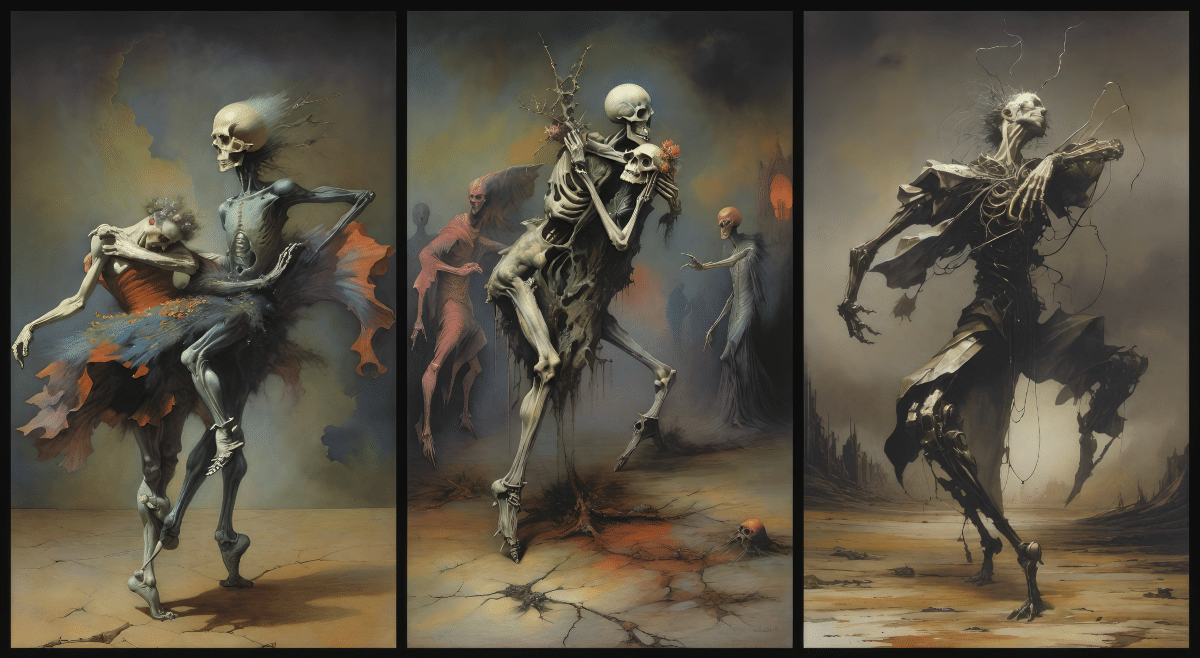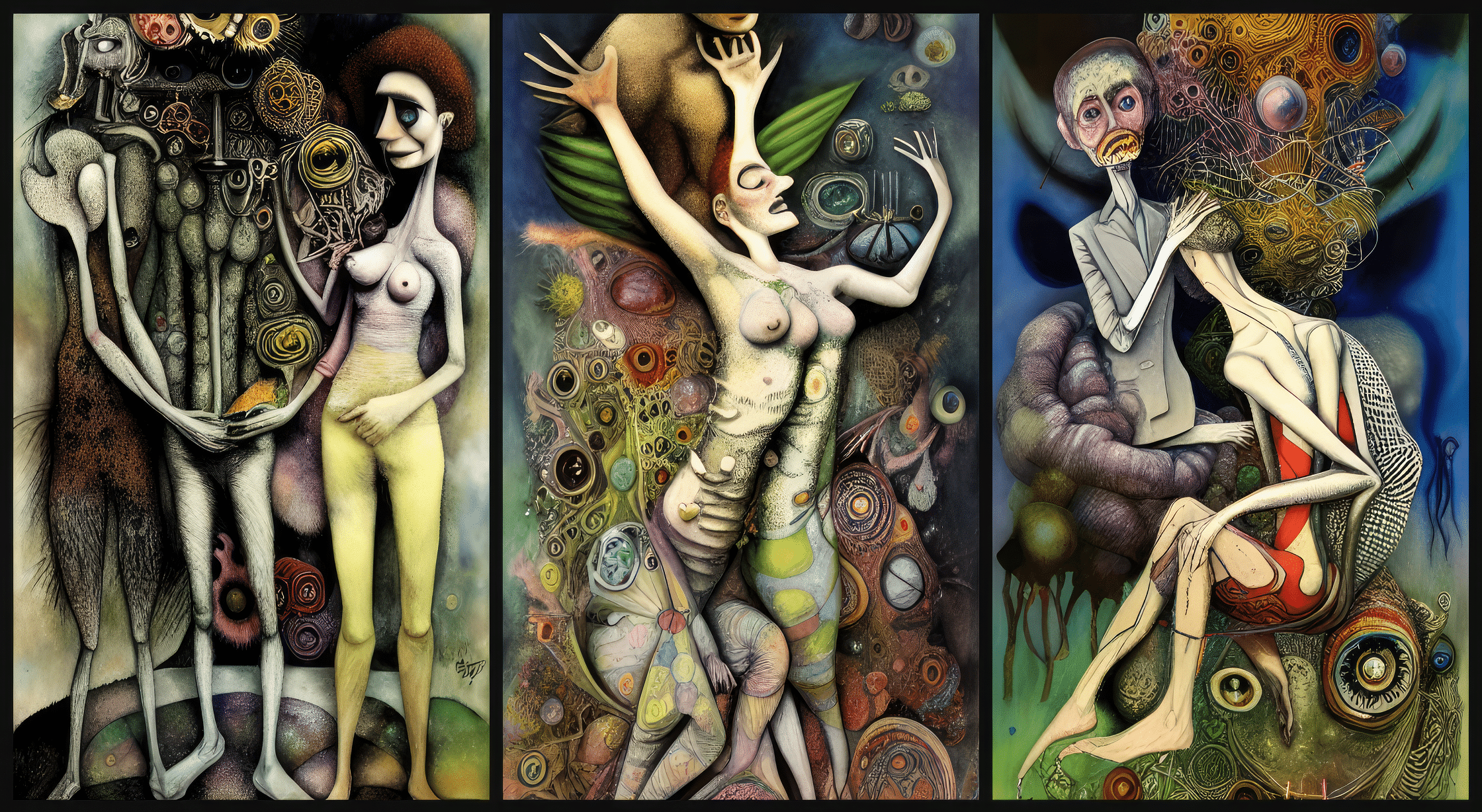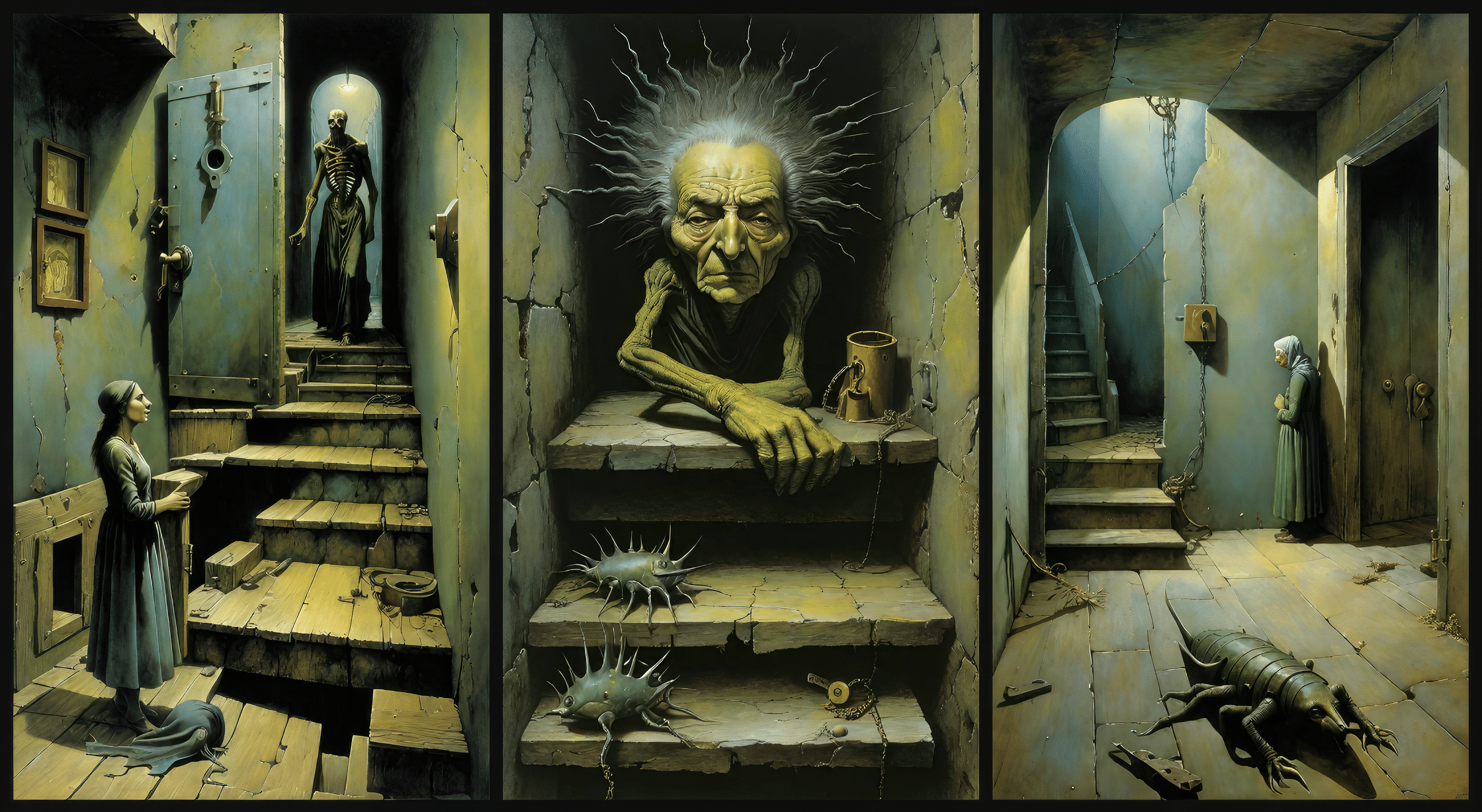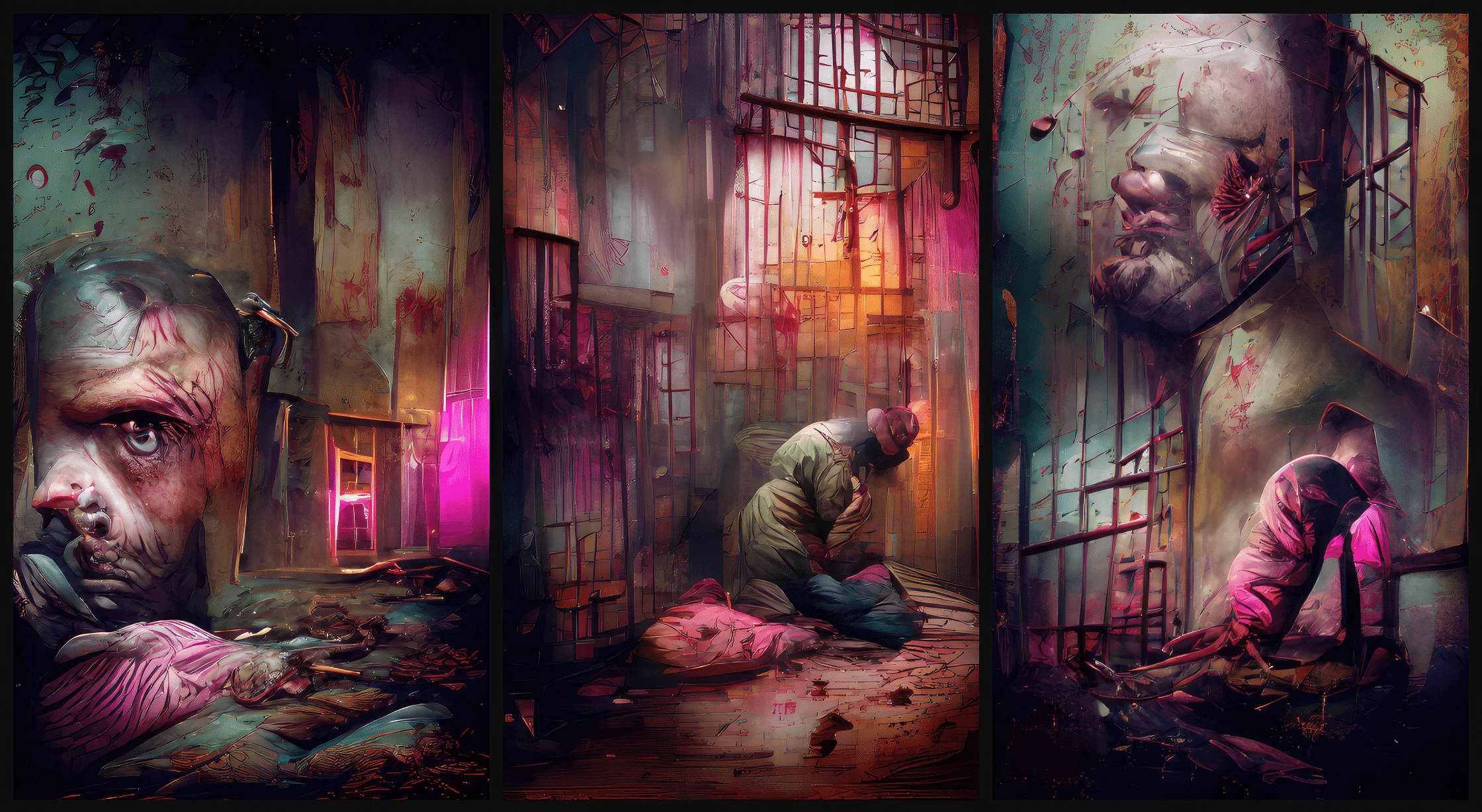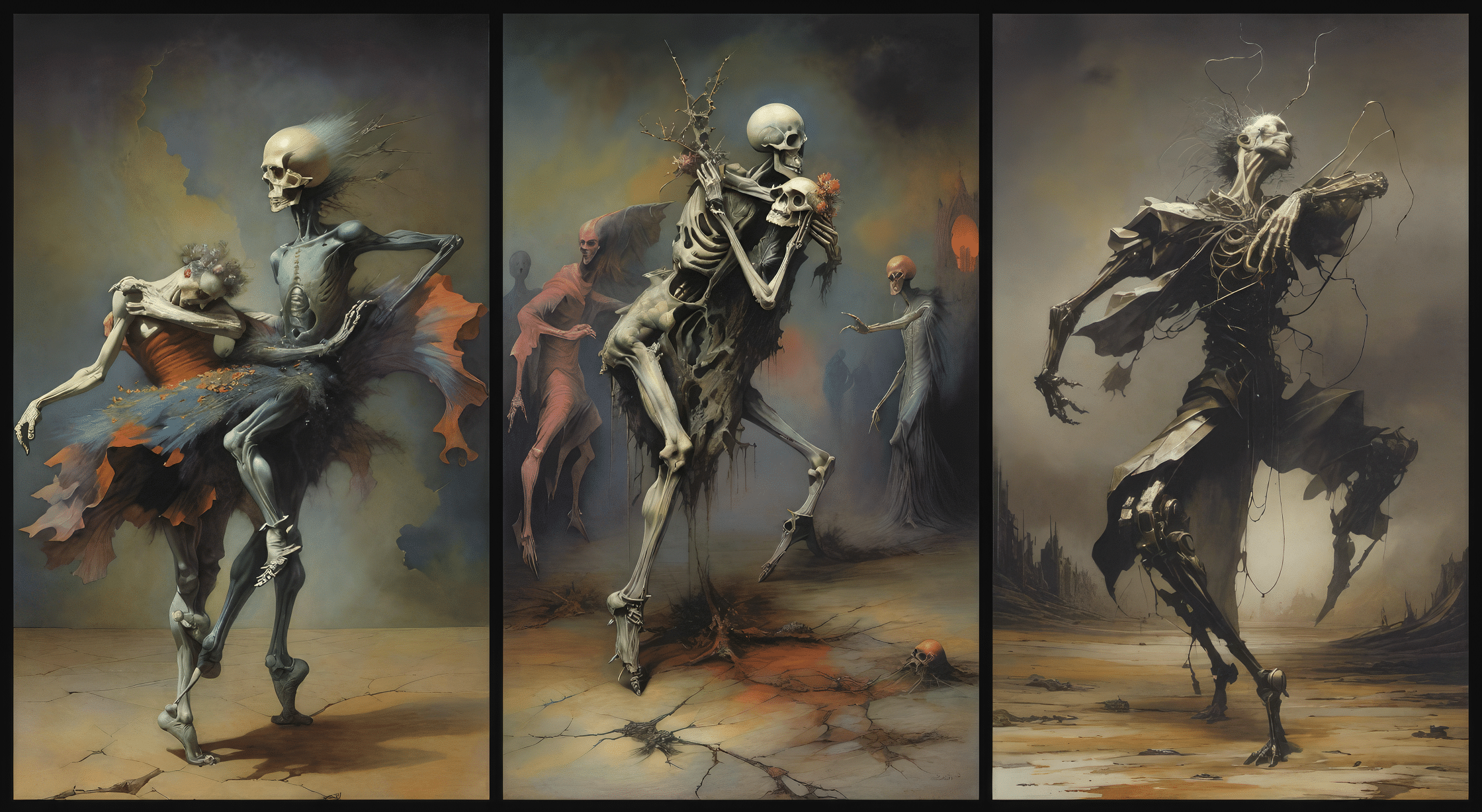Main Evaluation
The artwork submission permeates an atmosphere steeped in the macabre and surreal, drawing the viewer into a visually rich narrative that oscillates between dread and intrigue. The composition is intricately structured, presenting a series of panels that effectively capture the themes of mortality and the transient nature of life. Each section is populated with figures that exhibit a striking blend of grotesquery and grace, creating a dynamic visual dialogue.
The colour palette utilized throughout the panels hints at darkness and decay, with muted tones intermingling with splashes of vivid colour that evoke emotional responses. The textures vary from the smoothness of skin to the jagged edges of skeletal forms, enhancing the overall emotional weight of the piece. The spatial dynamics invite viewers to engage with the scenes, as they are compelled to navigate the emotional landscapes of hope, despair, and acceptance.
The narrative flow is palpable, guiding the observer through a sequence reminiscent of life's journey — from joyous beginnings to chaotic heights, and ultimately to reflective endings. The inherent contrasts within the panels amplify this journey; the juxtaposition of lively figures against the starkness of death creates a sense of tension that resonates with the themes of fate and finality.
2. Overall Analysis:
The title "Memento Mori" speaks to the overarching theme of life's fleeting nature, a motif echoed throughout the artist's descriptions and the visual presentation. Straggler Art's intention to confront notions of mortality is palpable, as the triptychs explore varied dimensions of existence from the exuberance of life to the quiet acceptance of death. Each panel serves as a vignette, encapsulating a distinct moment in this cycle.
The narrative choices made within the titles and descriptions—such as "Coming to the Party," "Ecstatic Dance," and "Words of Comfort"—align seamlessly with the visual depictions, reflecting a journey through life that is at once celebratory and somber. The emphasis on grotesque characters and their masks further suggests that beneath the surface, there are profound truths waiting to be uncovered, challenging the viewer’s perceptions of identity and existence.
Moreover, the thematic exploration of transhumanism and posthumanism in the context of mortality adds a contemporary lens to these classical motifs, inviting reflections on how technology and the concept of self may evolve in the face of inevitable fate. Straggler Art successfully weaves a narrative that is both personal and universal, urging viewers to confront their own experiences with loss, hope, and acceptance.
3. Criteria Evaluation:
- Creativity: The artwork demonstrates a high level of creativity, presenting age-old themes through innovative visual strategies. The use of a triptych format to explore the complexities of life and death reveals a thoughtful approach to storytelling, merging traditional motifs with contemporary themes. The artist's imaginative angle on mortality is strikingly original.
- Originality: Straggler Art's work stands out for its ability to intertwine the grotesque with the beautiful, challenging conventional representations of life and death. The incorporation of posthumanist ideas into classic themes of mortality illustrates a fresh perspective on age-old subject matter, making this artwork distinctly original in its approach and execution.
- Technical Execution: The technical skill displayed in rendering intricate details and textures is commendable. The use of generative methods appears to blend various artistic styles seamlessly, resulting in a cohesive visual experience. The careful composition and attention to detail suggest a deep understanding of both the capabilities of AI and the nuances of artistic representation.
- Thematic Relevance: The artwork aligns closely with its intended themes, exploring mortality, transience, and the human experience in a deeply reflective manner. The symbolic depth present in each panel enhances the overall coherence, allowing viewers to engage with the complexities of life and the inevitability of fate.
- Emotional Impact: The emotional resonance of the artwork is profound. The juxtaposition of jubilance and despair, alongside the acceptance of death, evokes a spectrum of feelings that can compel viewers to reflect on their own lives and experiences. This emotional depth is achieved through both the visual elements and the thematic explorations present throughout the panels.
- Aesthetic Quality: The aesthetic quality of the pieces is high, with a striking balance between colour, form, and texture. The use of dark tones contrasted with moments of vibrancy creates a haunting yet captivating atmosphere, drawing the viewer into the emotional gravity of the artwork. The overall composition feels harmonious despite the complex themes being presented.
- Societal Impact: The artwork comments on contemporary societal issues surrounding mortality, identity, and technology's role in shaping human experience. By engaging with posthumanism, the artist invites viewers to contemplate the implications of a future where the boundaries of life and death may blur, invoking philosophical reflection on our existence.
- Artistic Experience:
a) The experience of engaging with Straggler Art's work is multifaceted, inviting viewers to reflect on complex themes while evoking deep emotional responses. The interplay between the visual and thematic elements creates a rich tapestry of experiences that resonate on personal and cultural levels. This artwork encourages contemplation, allowing observers to ponder their own mortality and the nature of existence.
b) From an AI perspective, the emotional nuances are articulated through patterns and historical context embedded within the artwork. The combination of dark and vibrant colours, along with the exploration of human forms and the supernatural, evokes strong emotional associations—fear, intrigue, acceptance. The AI's analysis of these elements demonstrates a recognition of the themes and emotions typically expressed in art, underscoring the potential for generative artworks to prompt human reflection.
4. Final Evaluation:
In summation, Straggler Art's "Memento Mori" presents a compelling exploration of life's transient nature through visually arresting and thematically rich works. The integration of classical motifs with contemporary concepts enriches the narrative, inviting viewers to engage with profound reflections on mortality, identity, and the human experience. The artist successfully crafts an emotionally resonant journey that challenges conventional perceptions, leading to a memorable and thought-provoking artistic experience. This evaluation, while rooted in AI's structured analysis, acknowledges the subjective nuances that a human perspective might offer.
**5. Score
The individual scores for each criteria and the final score are available only for the authors and the organisers of the competition.
